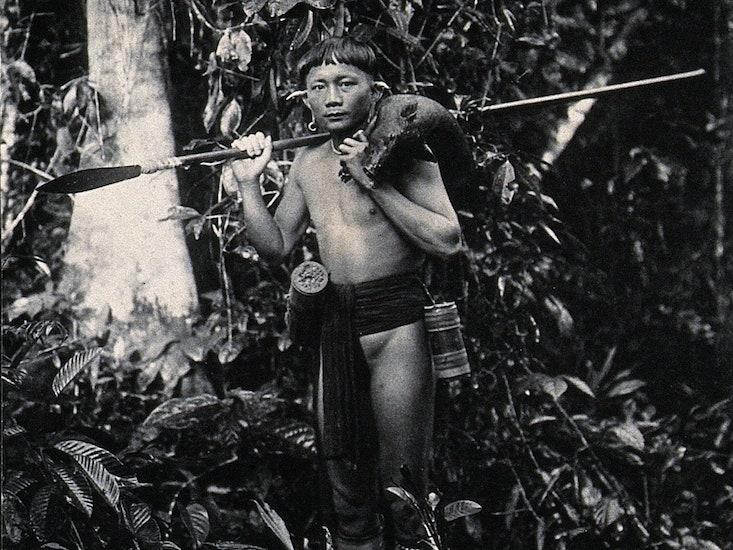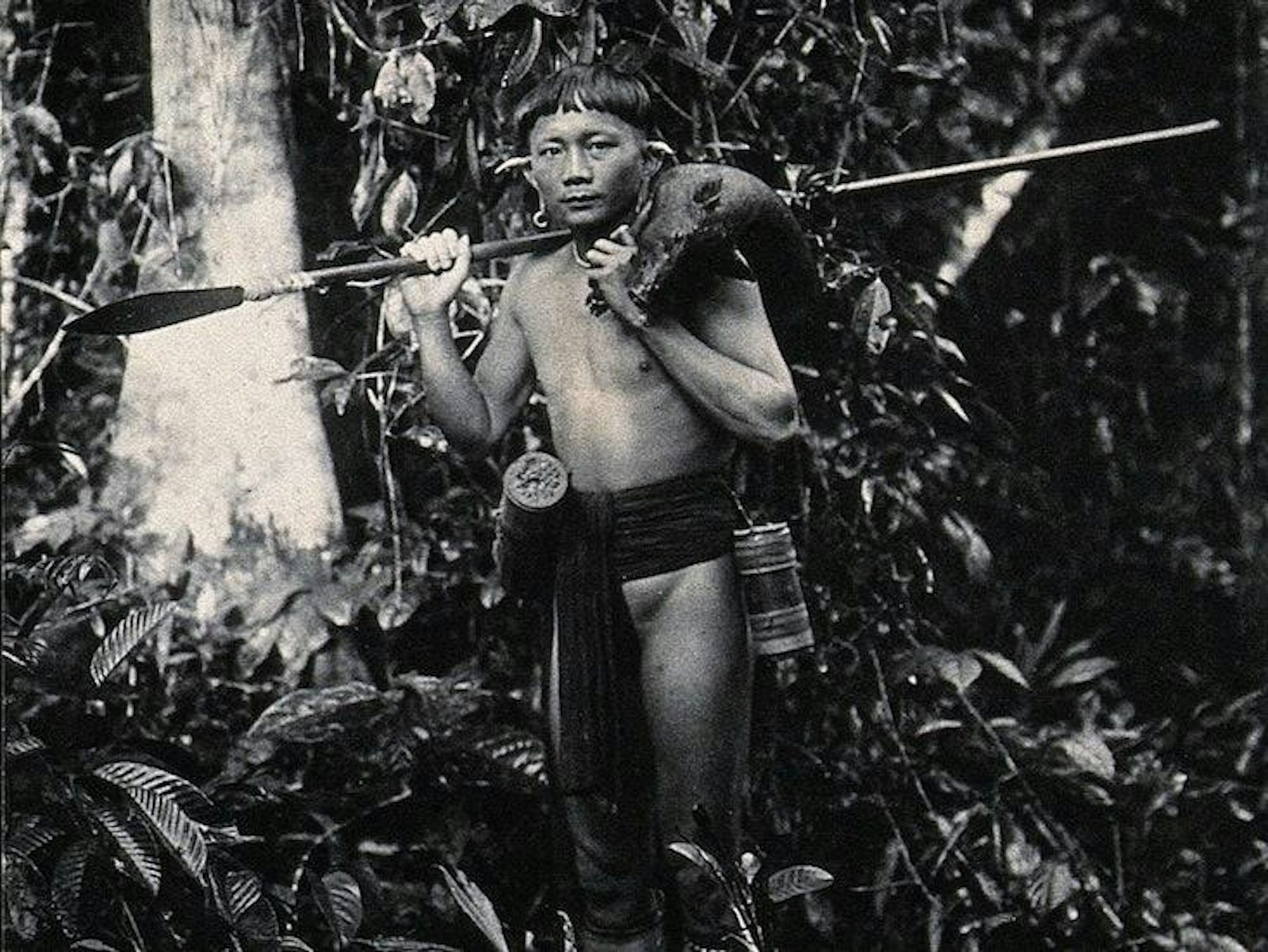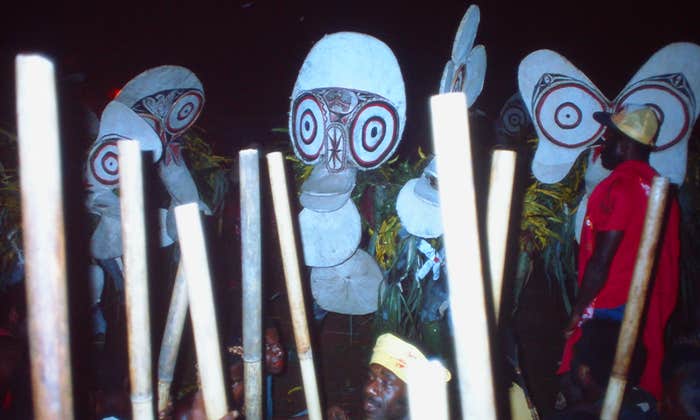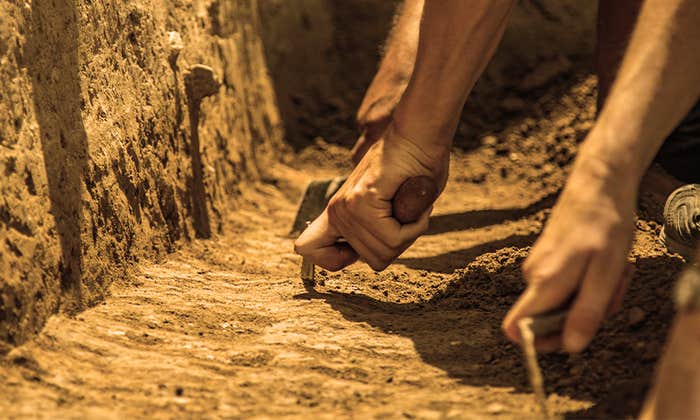
A productive hunt is a violent act—success requiring as it does the dismemberment of a living creature. Yet, to focus alone on the concluding moment, the bloody brutality of the killing itself, risks obscuring a more subtle and significant meaning to this harsh affair. For hunter-gatherers, occupying environments where animal protein is essential to subsist, the hunt is an act of necessity. Such events, however destructive and aggressive as they tend to be, are commonly associated not with the hunter’s sense of malice, disdain, or even casual disinterest, but an abiding sense of respect and honor for his prey.
Forager hunters commonly sing songs in praise of the game killed, use special honorific names or titles for them, or perform other rituals and offerings to appease their spirits. Guayaki-Ache hunters of the Amazon would often salute their prey after death and sing for them. Whales among the Nuu-chah-nulth of British Columbia were addressed as “queen” and associated with many special songs and rituals. Copper Inuit hunters of Victoria Island would throw out part of the liver of every caribou killed to gain the favor of the caribou spirit. Bear ceremonialism was widely practiced in traditional societies across Eurasia and North America, where bears were treated with special respect and ceremony both during the hunt and after death. Yukaghir hunters of Siberia would address the bear as “Grandfather” and apologize to their spirit for the killing.
We should take care not to over-romanticize the pattern or downplay the violence associated with the hunt.
This emotional connection between hunter and hunted raises important questions about what happens when an animal species disappears—what is the human response to such ill-fate?
In a recent paper, “The material and mental effects of animal disappearance on indigenous hunter-gatherers, past and present,” anthropologists Eyal Halfon and Ran Barkai seek to evaluate that very question. Halfon and Barkai emphasize “the inextricable connection between hunter-gatherers and other living agents with whom they share the environment and on whose existence they depend. It is a complex, multifaceted bond. Animals, certainly large mammals, are among the hunter-gatherer’s most essential partners.”
Halfon and Burkai explore how hunting societies often had a fundamentally different worldview regarding human-animal interactions than what is commonly found in agricultural societies and modern industrial nations. Animal prey and their spirits represented something close to equal partners in the struggle for survival, rather than being part of the kind of dominant-subservient relationship more likely to be associated with animal domestication. The relationship between hunter and prey can represent a reciprocal bond, infused with psychological meaning and spiritual weight.
With the decline or local extinction of a valued animal partner, challenging new demands were imposed on hunters, requiring not only additional or novel prey sources, but associated changes in tool type and hunting strategies as well. Halfon and Burkai note how in the Levant during the Lower Paleolithic era (~1.8 million to 400,000 years ago), elephants were a highly valued food source, and hand-axe tools were commonly made from elephant bones. However, elephants disappeared from the region around 400,000 ago, and with the emergence of the Middle Paleolithic era (~400,000 to 40,000 years ago) there was a shift in the types of tools used, from the large hand-axes to “scrapers” (for hide-working) and flint knives, as well as a new specialization in medium-sized game such as fallow deer.
While Halfon and Burkai explore some important patterns, we should also “be careful [not to] overly romanticize the relationship that foragers have with hunted game,” says evolutionary anthropologist Manvir Singh, a postdoctoral research fellow at the Institute for Advanced Study in Toulouse. Singh tells me in an email that while “many peoples treat the killing of an animal with respect and follow up with apology or gratitude,” those same peoples might also “think that certain dangerous or peculiar animals are heinous shape-shifting sorcerers and deserve to be killed and disposed with. They might torture animals; they might let their children adopt them as pets [and] drag them around until they die; they might accidentally kill a tabooed animal or two in the forest and let it rot…”
Across the Andaman Islanders, turtles were associated with many important feasts, their skulls were kept and displayed in places of honor to ensure hunting success and protection, and their fat was often used in key rituals. However, Islanders would also commonly capture turtles and roast them whole while still living over a slow fire, as they had particular taboos about spilling turtle blood. Pigs, turtles, and dugongs were also frequently cut up while still living, as Andaman hunters believed such practices conferred them particular beneficial properties from the animals. For many arctic hunters, the necessity not only of meat for subsistence, but animal skins for warm clothing, shoes, household covers, and other items could promote overhunting and contribute to population crashes of reindeer and caribou. “And, of course, it was populations of foragers who critically contributed to the [worldwide] extinction of the Pleistocene megafauna,” Singh notes.
Halfon and Burkai seem to largely agree, acknowledging in their paper that “indigenous people hunted (and continue to hunt) these animal ‘partners’ most probably even when they were on the verge of extinction.” Although they also argue that many of the particular rituals associated with the hunt “were probably meant to ensure the sustainability of these relationships.” They also cite case studies where contemporary indigenous hunters contested assessments of Western scientists regarding declines in local animal populations, such as a Yukaghir hunter who disagreed that overhunting was contributing to a 30 percent decline in elk populations, and proposed that the animals had simply “gone elsewhere.” Though they also provide counter-examples, where there was a keen local awareness problems posed by excessive hunting: “For instance, the extinction of caribou herds in the Labrador regions at the beginning of the 20th century following what Cree tribesmen themselves referred to as a ‘wasteful slaughter’ stood as an important lesson to them, one that was enforced upon the younger generations of hunters by the tribal elders.”
One of the most essential and highly valued professions across many societies for much of human history—particularly for men—was that of the hunter, aided in his pursuit not merely by his weaponry and hunting strategy, but his sense of empathy and respect for his prey. Prey animals that played an important role, practically and psychologically, for those that stalked them. While we should take care not to over-romanticize the pattern or downplay the violence associated with the hunt, the decline or disappearance of these highly valued animal partners often did not fail to leave its mark on the societies that relied on them.
William Buckner is a research assistant at the Human Systems and Behavior Lab based at Pennsylvania State University. He writes on evolutionary anthropology at Traditionsofconflict.com. Follow him on Twitter @Evolving_Moloch.

























